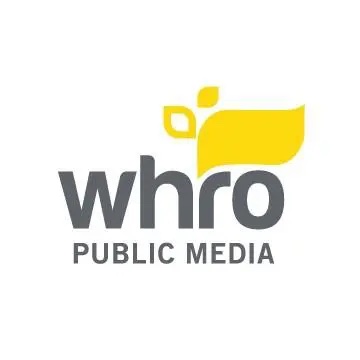The Joys and Challenges of Starting a New Newsroom
By: Rebecca Feldhaus Adams, WHRO Public Media News Director
The job post looked a lot like any other news director description. Advance strategic goals for local journalism. Ensure reporting is in depth, audience focused and wholly accurate. Champion ethical standards.
The reality, as is so often the case, was much more nuanced. As the first news director at WHRO Public Media in Norfolk, Va., I would be stepping into a rare role. I would be charged with creating an entirely new public media newsroom inside an organization that has served our community for almost six decades.
So I went after the job. And I got it. And I have six months of joys and challenges to share.
The most overarching observation is this: My ambitions far outweighed what was possible in my desired time frame. This will come as no surprise to anyone I’ve ever worked with. After being comedically disappointed, I realized my folly and regrouped.
And the piece of advice I needed came from my new teammate, our Morning Edition host Gina Gambony.
After hours of meetings about systems, structures and best practices, Gina gave me something that will guide my work in this position for as long as I’m in it. She told me that we have the creativity and intellect to do something truly unique as long as we don’t become too rigid in charting our course on existing road maps.
There is a buzzing energy in the idea of a blank slate. Instead of your current workload, you see the ideal job that you get to design from your own skills and experience.
Drawing The Map As We Go
There is a buzzing energy in the idea of a blank slate. Instead of your current workload, you see the ideal job that you get to design from your own skills and experience. The gnats of tedium that plague you in your current position are gone. You don’t see the bison-sized roadblocks a few miles ahead.
Charting our own course is something that wakes me up with enthusiasm most days. I’m six months in, and our two full time reporters just started. They are smart, they are genuine and they joined us knowing that this thing we’re building is going to take some time. With the help of editorial consultant Judith Smelser, I made the call to hire reporters first, then write the strategic plan. That way all of the journalism team — including reporters, show producers, hosts and managers — would work together to create a plan that represents who we are now, and where we want to go.
The biggest challenge to this part of the work is that we’re talking about the way forward in a language that the entire organization doesn’t share. WHRO’s trusted legacy is from our education departments, our award-winning video documentaries and public affairs shows that have been doing good journalism without explicitly calling it that. We will be at the forefront of expanding a culture of journalism, company-wide.
Our priority has been staying strong in our existing offerings, not adding new ones. With this news department, that’s changing. And change can feel threatening. When teammates feel my team’s presence is a challenge to the success of their own, I’m not going to get where I need to go. It’s through time, listening and challenging of my own assumptions that I’ve strengthened relationships with these peers.
It’s up to my team to outline our goals in a way that clearly explains how this newsroom is a natural outgrowth of our mission statement.
What Do Writers Do Without Writing?
How do you measure a month of work when it’s not in spots, features, time on page metrics, events?
When journalists talk about dream projects, they almost always involve months of time to deeply research and report the topic; time to address the problems that only have three pipe solutions. I am that journalist. And I’m living the dream right now, by that standard.
Yet almost every day around 3pm, there’s a tingle in the back of my brain, yearning to organize the All Things Considered newscast spots. Who have I become?
While our newsroom isn’t officially open for business, it hasn’t stopped us from doing good work with the personnel resources we have. I most recently spent time editing at WAMU, and editing and reporting for NPR, and I was used to the robust systems that support those editorial strategies. We’re building those systems here, and we can take time to ensure they’re at a level that fits where we are and what we’re trying to do.
How do you measure success without regular content? People and lists.
Designing For Content And Culture
 NPR’s Senior Supervising Editor/Producer of Morning Edition Alicia Montgomery is someone I think about a lot as I do this job.
NPR’s Senior Supervising Editor/Producer of Morning Edition Alicia Montgomery is someone I think about a lot as I do this job.